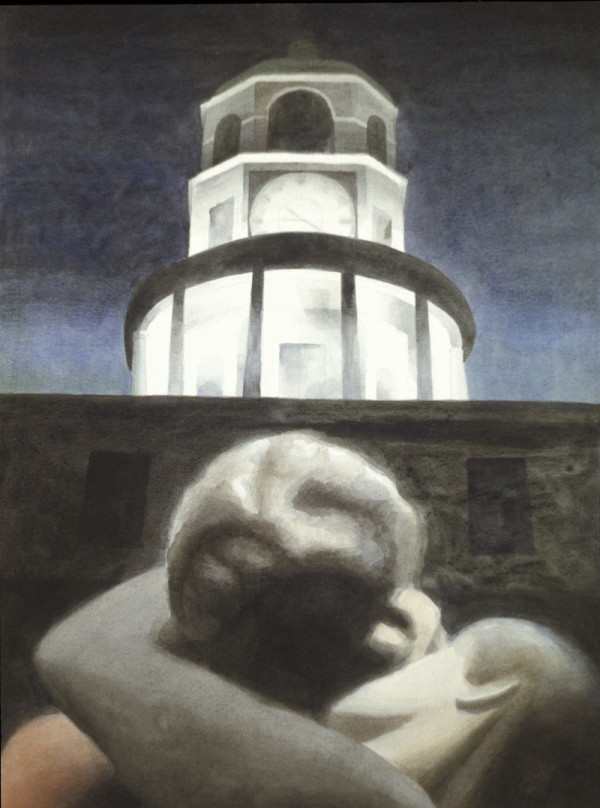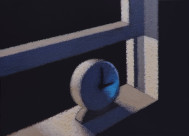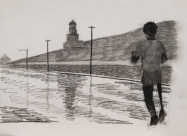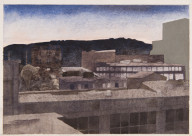Lovers kiss under the Old Town Clock at night. The building that houses the clock, a three tiered tower with a columnated base, is one of Halifax’s most recognizable landmarks. The clock is a remnant of Nova Scotia’s colonial past, built to ensure that the soldiers who manned the adjacent citadel arrived for work on time. By day, it is an attraction for tourists. At night, the citadel becomes a cruising ground, surrounded by nightclubs and the bar district. In Robert’s study for the painting, the clock reads 3:10 in the morning, the time when nightclubs close. Robert’s studio, at the time, was located three stories above the Seahorse Tavern, in the very heart of the bar district. The upper windows of the studio looked across at Citadel Hill.
In the past, artists treated the kiss theme in an idealized and comic way, often in a timeless, pastoral setting. Modern artists, such as Rodin, Munch, Klint, Brancusi and Picasso updated the theme, giving it a more erotic and urban edge. As soon as the kiss became a staple of films and popular music, it was viewed as kitsch by art connoisseurs and all but disappeared from Fine Art paintings, until resurrected by Pop Artists in the 1960s.
In Robert’s painting, Citadel, the lovers are a blur, emerging from the darkness by the light of the clock. The lovers are seen from above, looking down, and the clock is seen from below, looking up. This collage of different perspectives creates a cinematic effect. Clock and kiss together suggest such things as biological clock, carpe diem, and the role of a clock in fairy tales like Cinderella. Robert had painted the citadel over city rooftops in an earlier painting and also the town clock in an image recognizing Terry Fox’s historic run across Canada for cancer research. These early works reflect changes to the city and changes to Robert’s health. Citadel shows a staid, familiar place transformed by the fall of night and by desires that cannot be controlled, even by a military fortress.



